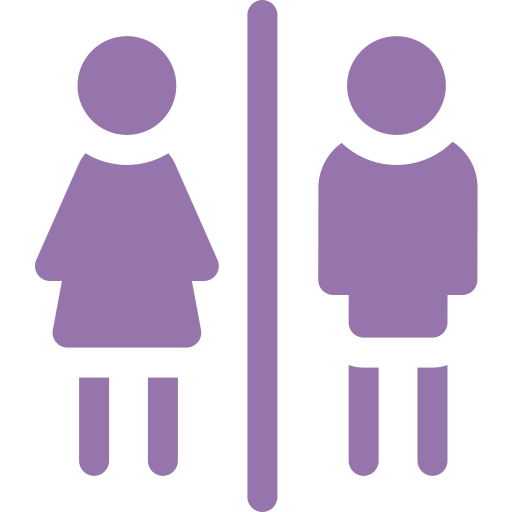About
Success
Treatment
Financial
Resources
Blog
Contact
Site Tools

Intrauterine Insemination (IUI) as a Fertility Treatment Option

Intrauterine insemination (IUI) is a type of assisted reproductive technology (ART) that involves placing sperm directly into a woman’s uterus during ovulation. The goal of IUI is to increase the chances of fertilization by bringing the sperm closer to the egg. Intrauterine Insemination (IUI) is the least invasive when it comes to fertility treatment options. One can do it with or without fertility drugs. IUI involves transferring specially washed sperm directly into the uterus via a thin catheter. Intrauterine Insemination also commonly goes by Artificial Insemination (AI).
You might get IUI treatment recommendation in the following situations:
- Male Infertility
- Treatment with fertility drugs is not successful
- Hostile cervical mucus
- If using a sperm donor
- Unexplained Infertility
IUI is not a good recommendation for those with blocked fallopian tubes, severe endometriosis, or a previous pelvic infection.
Cost of IUI
In some cases, Intrauterine Insemination (IUI) is usually the first recommended fertility treatment option. IUI is much easier in comparison to other assisted reproductive technologies like In Vitro Fertilization (IVF) and it also costs much less.
According to a survey conducted in the United States, the average cost of an IUI fertility treatment is $895. However, the actual price varies considerably from clinic to clinic. You will need to verify with the clinic that the cost is only for the procedure itself. There may be additional costs such as additional tests, blood work, and an ultrasound. Make sure you are clear about the price of the complete cycle before you start your treatment.
A single cycle of IVF may cost you around $19,000, which is much higher than the average cost of IUI.
IUI Treatment Cycles
Your cycle will be dependent on your doctor’s recommendation and whether you are on fertility drugs.
Clomid or Letrozole with IUI
Intrauterine Insemination can be combined with a Clomid or Letrozole treatment cycle. In this situation, you’ll have your blood test and ultrasound as soon as your next period starts. This is to confirm that you don’t have any ovarian cysts or are not pregnant.
If everything looks good, you’ll start your cycle with fertility drugs issued by your physician. Blood work and ultrasound monitoring may or may not be required.
Your doctor for fertility treatment will be monitoring your cycle regularly and will schedule the IUI procedure just before ovulation. If not, your doctor may ask you to use an ovulation predictor test at home. When the test result indicates ovulation is near, you’ll have to schedule blood work and ultrasound for your IUI procedure.
Gonadotropins with IUI
Drugs such as FSH, hMG and hCG are injectable fertility Gonadotropin drugs. Gonal-F, Follistim, and Ovidrel are some of the brand names you may recognize.
You will have to call your doctor and schedule an appointment for an ultrasound and bloodwork upon getting your period. This is to confirm that you’re not pregnant or don’t have any problematic ovarian cysts.
You will have to self-administer injections according to your physician’s instructions. You’ll also have to go through transvaginal ultrasounds and/or blood work throughout the process. Specialists will use the ultrasound to look for developing follicles. It is also useful to count the total number of follicles, how quickly they are growing and if they are near maturity. On the other hand, the blood work will measure your estradiol and progesterone.
Your fertility medication will be based on your hormone levels and the number of follicles growing on your ovaries. Once the follicles reach maturity, you will receive a trigger shot of hCG and the doctor will schedule your IUI procedure, usually after 36 hours.
The IUI Procedure
The IUI fertility treatment procedure is fairly simple. your fertility clinic will carry it out. Your partner will come on the day of the procedure and give a semen sample. If your partner is not available on the day of the procedure, they can provide a sample beforehand. In this case, it will be frozen until the day of the procedure. It will then be thawed and prepared.
The semen will go through a special washing procedure to take out all the impurities and leave only what the conception requires.
For the procedure, you’ll have to lie down on a gynecological table and a small thin catheter tube will be placed in your cervix. You may feel some mild cramping, similar to what you may feel during a pap smear. A catheter tube will then transfer the washed semen to your uterus . After that, a specialist will remove the catheter and your procedure is complete!
You may have to remain lying horizontally for a short period of time once the procedure is complete. You don’t need to worry at all as the sperm is transferred directly into your uterus.
What to Expect Post-Procedure
Once the procedure is complete, you may be prescribed progesterone. Usually, you have to take it as a vaginal suppository.
Approximately one week after your IUI procedure, you may have to undergo more bloodwork. Your progesterone, estrogen, and levels hCG levels will be checked.
Within 12 to 14 days post-procedure, your physician will order another blood test. This is the one that will determine if you’re pregnant! Waiting to find out the results can be very stressful. Just be sure to take care of yourself!
Risks of IUI Procedure
In general, the risks associated with intrauterine insemination (IUI) are low. However, like any medical procedure, there are potential risks and side effects that you should be aware of. Here are some of the most common risks associated with IUI:
- Multiple pregnancies: One of the most significant risks associated with IUI is the potential for multiple pregnancies. Fertility drugs that are often used in conjunction with IUI can increase the risk of multiple pregnancies, such as twins or triplets. Multiple pregnancies can increase the risk of complications during pregnancy and delivery.
There is a slightly higher risk of multiple pregnancies while using Gonadotropin drugs so close monitoring is crucial. If there are too many follicles, the cycle may be canceled and you will need to attempt it again from the start.
If your cycle is canceled because of too many follicles, you will probably receive advice to abstain from sexual intercourse. It is very important to listen to your physician in this case. If you have sexual intercourse and do conceive, you may be putting yourself and your future children at risk.
- Ovarian hyperstimulation syndrome (OHSS): Fertility drugs used in conjunction with IUI can sometimes cause OHSS, which is a condition in which the ovaries become swollen and painful. Symptoms of OHSS can range from mild discomfort to severe pain and swelling, and in rare cases, can be life-threatening.
- Infection: There is a small risk of infection associated with IUI. The procedure involves inserting a catheter through the cervix, which can introduce bacteria into the uterus and increase the risk of infection.
- Bleeding and cramping: Some women may experience mild bleeding or cramping after the IUI procedure. This is usually temporary and resolves on its own.
- Ectopic pregnancy: There is a small risk of ectopic pregnancy with any fertility treatment, including IUI. This occurs when a fertilized egg implants outside of the uterus, typically in the fallopian tube.
It’s important to discuss the risks and potential complications associated with IUI with your healthcare provider. Your healthcare provider can help you weigh the potential benefits and risks of IUI and determine if it is the right treatment option for you.
Success Rate of IUI Fertility Treatment
Intrauterine insemination (IUI) is a type of assisted reproductive technology (ART) that can have several potential benefits for couples experiencing infertility. Here are some of the potential benefits of IUI:
- Increased chances of conception: IUI involves placing sperm directly into a woman’s uterus during ovulation, which can increase the chances of fertilization and conception.
- Controlled timing: By monitoring the woman’s menstrual cycle, IUI can be timed to coincide with ovulation, which can increase the chances of success.
- Reduced cervical mucus issues: In some cases, cervical mucus may be hostile to sperm, making it difficult for them to enter the uterus. IUI bypasses the cervix, which can increase the chances of successful fertilization.
- Minimal discomfort: IUI is typically a minimally invasive procedure that is not usually painful and does not require anesthesia.
- Lower cost: Compared to other ART procedures such as in vitro fertilization (IVF), IUI is generally less expensive.
- Sperm washing: IUI involves washing the sperm sample to concentrate and select the most active sperm, which can improve the chances of successful fertilization.
It’s important to note that the success rates of IUI vary depending on the cause of infertility, the age of the woman, and other factors. It’s also important to discuss the options with a qualified medical professional who can provide personalized advice based on your specific situation.
In cases where fertility drugs and IUI were combined for treatment, the success rate is 15 to 17 percent. The ratio is per cycle, so, the iui success rate is much higher when multiple cycles are in combination together.
Your personal success rate will vary depending on your age and the cause of your infertility. In a study, researchers found the success rate as below
- 55% for cervical factor infertility
- 47.5% for infertility caused due to problems with ovulation
- 41.7% for male factor infertility
- 35% for unexplained fertility
- 14% for poor sperm motility
- 10% for endometriosis
In a study conducted, just 4% of women conceived successfully without using fertility drugs during their IUI cycle.
If you are considering IUI as a fertility treatment option, we’re here to help. You can reach out to Coastal Fertility Medical Center, a fertility clinic located at Irvine in Orange County, by calling 949-726-0600 or visiting our website at www.coastalfertility.com.
Schedule a Consultation
Related Post
-
What is Azoospermia – Types, Causes, Symptoms, and Treatments
-
15 Things Doctors Want Women in Their 30s to Know About Their Fertility
-
Ovarian Hyperstimulation Syndrome (OHSS) – Causes, Risks, and Treatments
-
This IVF Pregnancy Success Video Is Going Viral On TikTok, And It’s The Most Adorable Announcement
-
End your week with these happy and heartwarming stories and videos
-
Fertility clinic shares IVF pregnancy success with parents-to-be in adorable video
Halloween 2019
Each year, Coastal Fertility Medical Center’s staff hosts a fun get together for our former patients and their families. View more photos from our 28th annual Miracle Babies Halloween event!Popular Searches
- Orange County Fertility Clinic
- Irvine, California Fertility Center
- Coastal Fertility Medical Center
- Free Fertility Seminar, Irvine CA
- In Vitro Fertilization and ICSI
- Best Orange County Infertility Doctor
- Southern California Fertility Specialist
- PGD, PGS Orange County
- Egg Donation and Surrogacy
Address
Coastal Fertility Medical Center15500 Sand Canyon Avenue
Suite 100
Irvine, CA 92618
©2024 | Sitemap | HIPAA/Privacy | Disclaimer and Privacy Policy
News from our Top Doctors

Our fertility clinic focuses on helping you build your family regardless of your sexual orientation or the gender you choose to identify with. We are even taking further steps to make LGTB people feel more welcome at our fertility clinic. Each of our patient-facing staff goes through LGTB training to let family-building clinicians provide necessary support and make you feel highly welcome.

Coastal Fertility Medical Center offers one of the most advanced fertility treatments and is completely transparent regarding the costs of procedures and any other expenses that you may have to pay before commencing your treatment. This differentiates us from some fertility clinics that reduce prices before the signing of the contract but charge you extra later on. We make sure our patients are well aware of any possible extra pricing that may occur over the course of their treatment.

The infertility industry is currently segmented, with each service or treatment being handled by a different provider. Our all-inclusive model simplifies an otherwise complex and difficult process. We are here to revolutionize the infertility industry by offering a one-stop-service model to assist our patients through infertility challenges while reducing physical, emotional, and financial risks.

Our globally respected team of specialists are helping improve IVF technologies to enter into a generation of better outcomes for infertility. Although you’ll have a doctor guiding you, you are also going to benefit from the experience and insights of other doctors during case review collaboration meetings, which take place every week. So, you won’t just rely on the expertise of a specialist but benefit from the knowledge of many reputed fertility experts.

Our team specializes in difficult cases and help patients who may have been considered “hopeless” at other fertility clinics. Thanks to our personalized solutions, expertise, and internal collaboration, weare able to maximize pregnancy success rates that are well above the industry average, even in difficult infertility cases.

We know that every situation is different and that everyone requires different treatments. Unlike facilities that take “a one-size-fits-all” approach for all cases, our fertility specialists use more than 40 customized protocols to raise the chances of success. The customized approach even extends to our fertility laboratory. Our on-site lab director and his highly-experienced team nurture every embryo and egg to increase the odds of success of each cycle.

Coastal Fertility Medical Center offers one of the most advanced fertility treatments and is completely transparent regarding the costs of procedures and any other expenses that you may have to pay before commencing your treatment. This differentiates us from some fertility clinics that reduce prices before the signing of the contract but charge you extra later on. We make sure our patients are well aware of any possible extra pricing that may occur over the course of their treatment.
Thanks for Joining!
We will be sending new updates soon.
You’re all set!
Your new patient forms have been submitted and received. We look forward to seeing you at your appointment.
Send us a message, we’ll be happy to answer any questions!
Please complete the form so we can best serve and help you with your journey towards parenthood.
On Demand Seminar Registration
Following the Preimplantation Genetic Screening process, which helps ensure there are normal chromosome numbers and detects possible genetic disorders, the most healthy embryo(s) are selected to be implanted into your or your chosen surrogate’s womb. 2 weeks after the transfer of the embryo, your physician will conduct a final blood test to determine the level of hCG (human chorionic gonadotropin) in your body. Increased hCG levels usually indicate a positive pregnancy test.

For fertilization to take place, the collected egg and sperm are combined in a petri dish and cultured in an embryo incubator. This dish is closely watched to check whether any of the eggs have been fertilized. Once the egg is fertilized, it is referred to as an embryo or a blastocyst on the 5th day of development. Our in-house embryologist carefully nurtures every embryo to the right time, even if it means working outside the standard business operating hours. For instance: If an oocyte is not mature, our laboratory will wait for it to mature and then ICSI it at the right time.

The egg retrieval is a slightly invasive medical procedure that takes about 20 to 30 minutes. You will be given an anesthetic to make you sleep for the duration of the procedure. Using ultrasound technology, your doctor will harvest your eggs transvaginally with a small, hollow needle connected to an ultrasound probe. Once your eggs are collected, your partner’s semen or donor sperm you have pre-selected is used for fertilization. The sperm are washed and prepared, and the top-quality sperm extracted is used to fertilize the eggs.

Your doctor will create a customized medication schedule that contains information about the fertility medications and hormone injections you have to take. Medication and injections are taken to encourage your ovaries to mature a large number of eggs for fertilization. Since women don’t respond to fertility drugs and hormones the same way, personalized protocols are crucial to the IVF cycle success. At Coastal Fertility, we will monitor you closely, letting you understand the changes occurring in your body and keeping track of how your egg follicles are growing.

On-site consultations typicallyinclude a standard fertility evaluation, consisting of a physical examination, complementary follicular ultrasound, and testing to enable your doctor to know your present fertility status and draw up a treatment plan.

This consultation includes a detailed medical evaluation with a doctor. You and your physician will review your health records and have enough time to talk about your goals and get answers to your questions. We recommend that you jot down all your questions before the visit to allow you to make the best use of the time spent with your doctor.

Your Reproductive Endocrinologist will take all factors into consideration and create a comprehensive plan of care, otherwise known as the treatment plan. This plan will include treatment recommendations from the physician and enable your financial coordinator to make a precise quotation once you meet.

Our globally respected team of specialists are helping improve IVF technologies to enter into a generation of better outcomes for infertility. Although you’ll have a doctor guiding you, you are also going to benefit from the experience and insights of other doctors during case review collaboration meetings, which take place every week. So, you won’t just rely on the expertise of a specialist but benefit from the knowledge of many reputed fertility experts.

The infertility industry is currently segmented, with each service or treatment being handled by a different provider. Our all-inclusive model simplifies an otherwise complex and difficult process. We are here to revolutionize the infertility industry by offering a one-stop-service model to assist our patients through infertility challenges while reducing physical, emotional, and financial risks.

Our fertility clinic focuses on helping you build your family regardless of your sexual orientation or the gender you choose to identify with. We are even taking further steps to make LGTB people feel more welcome at our fertility clinic. Each of our patient-facing staff goes through LGTB training to let family-building clinicians provide necessary support and make you feel highly welcome.

We know that every situation is different and that everyone requires different treatments. Unlike facilities that take “a one-size-fits-all” approach for all cases, our fertility specialists use more than 40 customized protocols to raise the chances of success. The customized approach even extends to our fertility laboratory. Our on-site lab director and his highly-experienced team nurture every embryo and egg to increase the odds of success of each cycle.

Our team specializes in difficult cases and help patients who may have been considered “hopeless” at other fertility clinics. Thanks to our personalized solutions, expertise, and internal collaboration, weare able to maximize pregnancy success rates that are well above the industry average, even in difficult infertility cases.

Upon your arrival, you will check in with a Patient Care Coordinator. We will obtain your insurance information for benefits verification, a copy of your identification and take a picture for your electronic medical chart
Welcome to Coastal Fertility Family
Coastal Fertility is the leading provider of fertility solutions located in Orange County. Join us to get free updates on fertility news, treatments, infertility solutions and more.
Welcome to Coastal Fertility Family
Coastal Fertility is the leading provider of fertility solutions located in Orange County. Join us to get free updates on fertility news, treatments, infertility solutions and more.





































